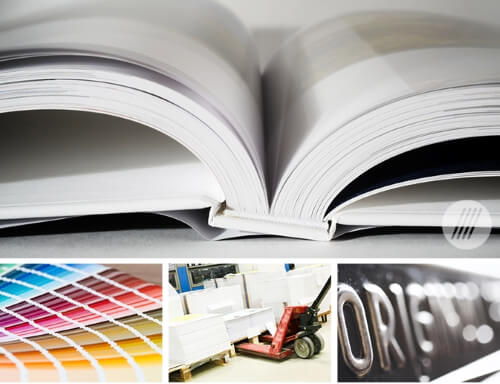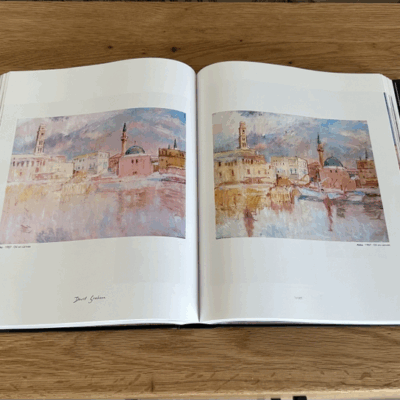Gloss or Matte: Choosing the Best Paper for Your art book
Gloss or Matte: Choosing the Best Paper for Your art book
Blog Article
Understanding the Refine Behind Premium Art Book Printing for Art Enthusiasts
When it involves top notch art book printing, understanding the details of the procedure can raise your gratitude for the end product. You could not realize just how important paper option and ink choices are to the vibrancy of artwork. Each element plays a substantial role in attaining the desired impact. As you discover the various elements of art book printing, you'll uncover insights that could change your perspective on art preservation and discussion.
The Importance of Paper Choice in Art Book Printing
When it pertains to art book printing, the selection of paper can make or break the end product. You desire your art work to beam, and the right paper boosts shade vibrancy and information. Take into consideration factors like weight, structure, and surface; these elements significantly impact how readers view your work.
As an example, a larger supply shares top quality and resilience, while a distinctive coating can include deepness to photos. Smooth paper is superb for detailed recreations, allowing great lines and refined tones to show up crisp.
Do not neglect concerning the paper's illumination; a brighter sheet can assist shades pop, making your art a lot more distinctive. You'll additionally intend to think of just how the paper connects with inks and whether it can deal with the printing procedure without warping or bleed-through. Ultimately, picking the appropriate paper establishes the phase for your art, ensuring it captures the audience's focus just as you envisioned.
Choosing the Right Inks for Vibrant Recreations
Picking the ideal inks is equally as important as picking top quality paper to achieve dynamic recreations in your art book. When you're publishing artwork, you want shades that pop and accurately stand for the initial item. Go with inks with a high pigment focus; these have a tendency to produce richer and extra saturated colors.
You could think about using historical inks, which resist fading with time, ensuring your art book continues to be as striking as the day it was printed. If you're dealing with photos or electronically created art, pigment-based inks can give a larger shade range, improving information and depth.
Do not forget the finish! Matte and glossy inks can drastically modify the appearance of your art work, so think regarding the appearance you're intending to attain - art book. Eventually, the appropriate ink choice complements your paper selection, developing a stunning visual experience for your viewers
The Role of Color Administration in Publish Quality
Color monitoring plays a necessary duty in achieving high print high quality for your art book. It assures that the colors you see on your screen equate precisely to the published web page. Without efficient color monitoring, your vibrant artworks may appear boring or altered, threatening your creative vision.
Next off, make use of shade accounts tailored for your printer and paper type. These profiles direct the printer in replicating shades precisely, minimizing inconsistencies between digital and printed variations.
When you prepare your files, consider making use of a shade room like Adobe RGB or CMYK, depending on your printer's specifications. Always evidence your job, as well; a test print can reveal any kind of possible shade problems before the last run. By focusing on color management, you safeguard the honesty of your art, assuring your audience experiences it as you intended.

Understanding Various Binding Methods
Achieving the excellent search for your art book surpasses shade administration; binding techniques additionally play a considerable duty in its general discussion and toughness. You have several options to review, each with its own distinct qualities.
If you're intending for a professional feeling, situation binding supplies a durable alternative with a difficult cover, ideal for showcasing your art work. On the other hand, best binding supplies a flexible spinal column while maintaining prices down, making it a popular choice for softcover publications.
Spiral binding permits your art book to lay flat, which is terrific for displaying images without blockage. At the same time, saddle stitching is ideal for smaller sized booklets, giving a clean coating without the mass.
Ultimately, the binding method you select should reflect your imaginative vision and exactly how you want viewers to engage with your work. Ensure to consider these choices meticulously to attain the best result for your task.
The Effect of Publish Size and Format on Presentation
While the choice of print size and design might seem additional to material, they greatly influence just how your artwork is viewed. The measurements of your prints can either boost or reduce the influence of your items. Bigger prints can attract customers in, enabling them to appreciate intricate details, while smaller styles could call for even more intimate interaction.

Preservation Methods for Lasting Art Books
To guarantee your art publications stand the examination of time, it's important to implement efficient preservation strategies. Begin by storing them in a trendy, completely dry atmosphere, far from direct sunshine and humidity. This protects against fading and warping, maintaining your pages undamaged. Use acid-free storage boxes or safety sleeves to protect them from dirt and physical damage.
When handling your publications, always wash your hands or put on cotton handwear covers to prevent oils and dust moving onto the pages. Prevent flexing or creasing the spinal columns; rather, use book supports when presenting them.
For added protection, take into consideration buying archival-quality materials for any type of fixings or enhancements. Consistently check your collection for indications of wear or damages, resolving concerns go now immediately. By adhering to these simple techniques, you can ensure your art publications continue to be dynamic and easily accessible for several years ahead, preserving their beauty and value for future generations.
Working together With Printers for Ideal Outcomes
When you're all set to publish your art book, picking the ideal printer is vital to achieving your vision. Clear communication about your expectations and needs will help guarantee that both you and the printer are on the very same web page. Allow's check out exactly how to make this partnership as seamless and efficient as possible.
Selecting the Right Printer

Efficient Interaction Strategies
Efficient interaction is essential for turning your art book vision right into fact, especially when collaborating with printers. art book. Begin by plainly detailing your job's goals, consisting of layout elements, preferred materials, and any type of certain printing strategies. Do not hesitate to share your inspirations and recommendations; this aids the printer understand your aesthetic
Set up routine check-ins to go over development and resolve any kind of inquiries. Usage visuals, like mock-ups or examples, to share your concepts better. Be open to comments, as printers typically have useful understandings that can improve your job. Lastly, preserve a positive connection by being respectful and appreciative of their expertise. This cooperation will certainly assure that your art book satisfies your expectations and shines in its final kind.
Frequently Asked Questions
What Are Usual Errors to Prevent in Art Book Printing?
When publishing your art book, stay clear of typical mistakes like poor resolution photos, inaccurate color accounts, and overlooking page format. Don't forget to check and confirm details to confirm your end product fulfills your expectations.
How Does Digital Printing Differ From Standard Printing Techniques?
Digital printing makes use of digital files to produce prints directly, enabling quicker turnaround and customization. On the other hand, conventional techniques include physical plates, which can be taxing and much less versatile for small runs or special designs.
What Is the Regular Turnaround Time for Art Book Printing?
The regular turnaround time for art book printing differs, but you can expect it to take anywhere from a few weeks to a number of months. Factors like complexity, amount, and printing method all affect this timeline.
Can I Publish a Restricted Version Art Book Economically?
You can print a minimal edition art book financially by selecting cost-efficient materials, enhancing print runs, and making use of digital printing choices. Mindful planning and budgeting will assist you attain quality without spending beyond your means.
What Are the Environmental Considerations in Art Book Printing?
When thinking about art book printing, you should think of green materials, sustainable inks, and energy-efficient processes (art book). Selecting neighborhood printers can additionally reduce your carbon footprint, making your job both attractive and eco accountable
Report this page